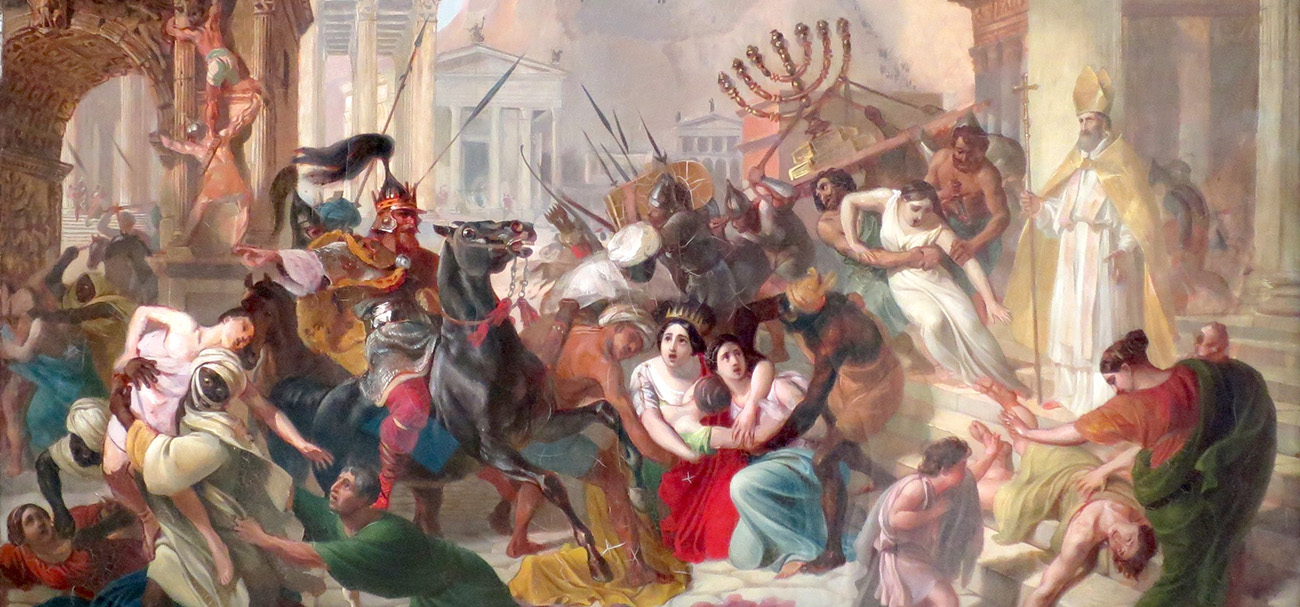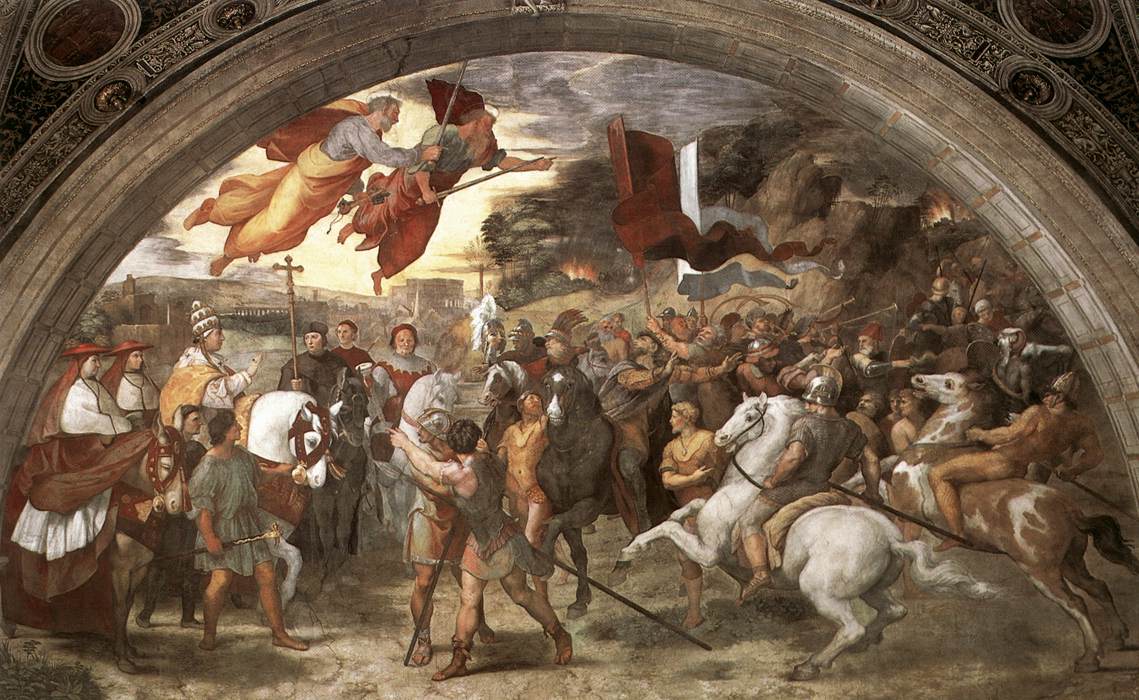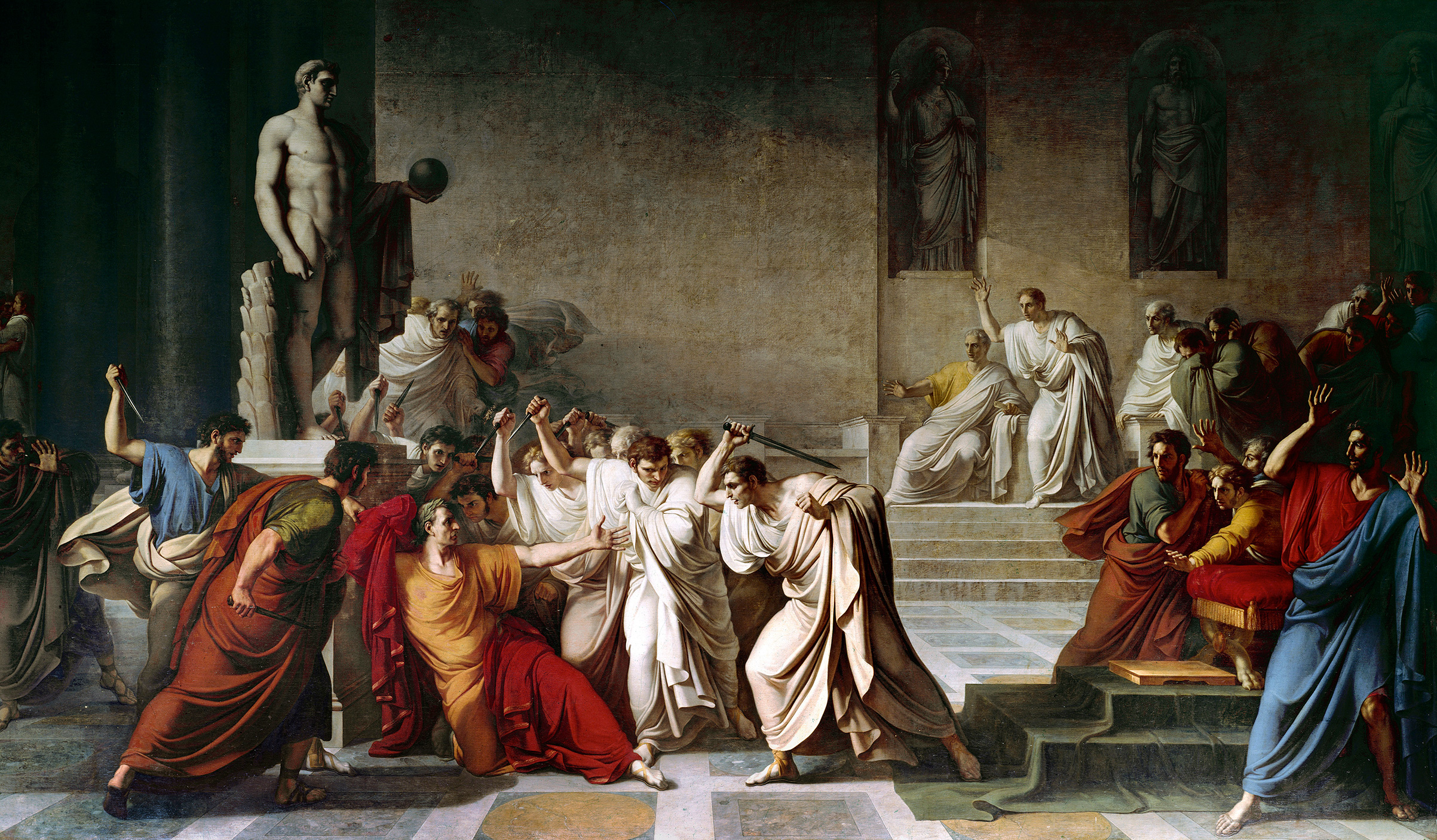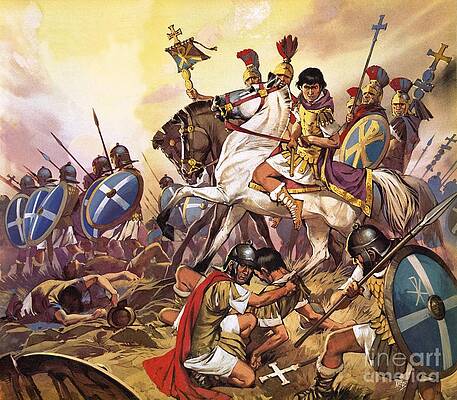Fall Of Western Rome: Ancient Western Empire
In 476 AD, the last Roman emperor was overthrown, and the western half of the Roman Empire fell. This event has been seen as a turning point in European history, marking the end of Antiquity and the beginning of the Middle Ages. But what caused the fall of Rome?
There are many theories, but no definitive answer. In this blog post, we will explore some of the most common explanations for the collapse of western Rome.

Barbarian tribes have invaded the area.
This has resulted in frequent wars between them and the Roman armies, but they are unable to effectively deal with these invaders due to their weakened state.
In addition to internal issues like corruption and military weakness, external factors also contributed to the fall of Rome. For centuries, Rome had faced pressure from barbarian tribes that lived on its borders. These invasions ultimately led to the sacking of Rome in 410 CE by the Visigoths, marking a major turning point in Western history.

Economic difficulties, as well as an overreliance on slave labor
Economic difficulties, as well as an overreliance on slave labor, had weakened Rome prior to the invasions by foreign groups like the Visigoths and Vandals. By the fifth century, Rome was no longer able to defend itself against these external threats, and in 410 the Visigoths sacked the city, bringing an end to classical Roman civilization.
Over the next century, increased pressure from Germanic tribes such as the Ostrogoths, Franks, Angles, and Saxons further weakened Rome. These groups threatened trade routes and supplies of natural resources like iron ore and grain that were vital to the stability of Roman society.
Finally, in 962 AD, Charlemagne emerged as a strong leader who united many of these tribes under his rule. His establishment of the Holy Roman Empire marked the end of Rome’s rule in Western Europe, although the city itself continued to exist as a center of learning and culture.
While the fall of Rome was a significant turning point in history, its legacy continues to be felt in the modern world. Roman law and government served as the foundation for many modern European states, and its art and architecture continue to inspire artists and architects today.
Additionally, the Latin language that was spoken during the Roman Empire is still used in many parts of the world, particularly in the Catholic Church.

The emergence of the Eastern Empire was marked by a number of events.
Despite the fall of Western Rome, its Eastern counterpart continued to thrive for several centuries. Key events that contributed to this success include the ascent of Constantine I and the adoption of Christianity in 312 AD, as well as the rise of Justinian I and his reconquest of much of the former Roman Empire in the 6th century.
In addition to these political developments, a number of key factors also played a role in strengthening the Eastern Empire. Economically, Constantinople benefited from its strategic location along important trade routes such as the Silk Road, while its wealth and prestige made it an appealing target for barbarian raids.
Furthermore, strong defense systems like Theodosius’ Walls helped ensure that Constantinople remained one of the most secure cities in Europe for centuries.
As a result of these factors, the Eastern Empire was able to weather both external threats and internal turmoil, remaining a major power in Europe for hundreds of years after the fall of Western Rome.
While it eventually succumbed to Ottoman forces in 1453, its legacy can still be seen today in cities like Constantinople/Istanbul and institutions like the Orthodox Church. In this sense, then, we can say that despite the collapse of one empire, another continued to thrive and even dominate much of Europe for centuries to come.

In addition to military extravagance, the government is also corrupt and political instability exists.
In addition to military extravagance, the government of Rome was also characterized by a high level of corruption and political instability. This can be seen in the frequent assassinations and power struggles that occurred among the ruling elite, as well as the exorbitant taxes and levies that were imposed on the general population.
Furthermore, there was a growing sense of resentment among many Romans toward their rulers – particularly after the disastrous civil wars that followed the assassination of Julius Caesar in 44 BC – which contributed to further instability and unrest within society.
Overall, then, it is clear that a number of factors combined contributed to the eventual collapse of Western Rome. While military extravagance played an important role in weakening Rome’s defenses against external threats, economic and political problems within the empire were also significant contributing factors.
In the end, these internal issues proved to be just as damaging as the barbarian invasions and ultimately led to the fall of one of history’s most powerful empires.
As a result of the Huns’ invasion and subsequent migration, the Barbarian tribes were forced to relocate.
The Huns’ invasion of Europe in the early 5th century AD led to the displacement of a number of Barbarian tribes, who were then forced to migrate westward into Roman territory.
This migration put pressure on Rome’s resources and contributed to economic instability, as well as increased social tensions between the Barbarians and the native population.
Additionally, the Barbarians brought with them new weapons and tactics that proved to be quite effective against the Roman army, further weakening Rome’s defenses.
All of these factors combined to contribute to the fall of Western Rome. While the Huns’ invasion was certainly a major turning point, it was only one part of a larger process that saw a gradual decline in Rome’s power and influence. Other factors such as political instability, economic problems, and military weakness all played a role in the empire’s eventual collapse.
Nevertheless, despite this downfall, Rome’s legacy continued to thrive and even dominate much of Europe for centuries to come. Even today, we can see the influence of Roman culture in cities like Constantinople/Istanbul and institutions such as the Orthodox Church. In this sense, then, we can say that while one empire fell, another survived and flourished for many years afterward.
The decline of traditional values in the wake of Christianity
One of the key factors that contributed to the fall of Western Rome was the decline of traditional values in the wake of Christianity’s spread throughout the empire.
As more and more people converted to Christianity, they began to adopt new values and beliefs that were at odds with those of the traditional Roman culture. This led to a growing rift between the Christian population and the pagan ruling class, which eventually resulted in open conflict.
Additionally, as Christianity became more prevalent, it began to challenge the authority of the Roman state itself. This led to further instability and ultimately helped contribute to the fall of Rome.
While Christianity certainly played a role in the decline of traditional Roman values, it is important to note that this was only one factor among many. Other important factors such as economic decline, social unrest, and military weakness all contributed to the decline of Rome as well.
Nevertheless, given the central role that Christianity played in shaping Western society and culture, it is fair to say that this religion played a significant part in the downfall of Rome.
This can be seen today in the continued influence of Roman culture and institutions, which still shape much of our world even after thousands of years. Thus we can say that while one empire fell, another survived and thrived for many years thereafter – a testament to its enduring legacy.
The Roman legions are being weakened.
One of the main reasons for the fall of Western Rome was the weakening of the Roman legions. This was caused by a number of factors, including economic decline, social unrest, and military weakness.
As the Roman Empire continued to decline, its ability to fund its army also declined. This led to a decrease in the quality of the legionnaires, as well as a reduction in their numbers.
Additionally, as social unrest increased, more and more people began to desert the legions. This further weakened Rome’s military strength and made it more vulnerable to attack.
Finally, the legionnaires themselves were becoming increasingly undisciplined and ineffective against their enemies. All of these factors combined to contribute to the fall of Western Rome.

Causes that are external
Rome were the extensive social changes that were taking place in European society. These external causes included a process of what has been called “Barbarian invasions” into the western Roman Empire.
The Huns had displaced numerous Germanic peoples to the west and south of Germany, who in turn invaded and threatened the eastern Roman provinces along its borderlands (the Balkans) with great effect.
The Huns also stimulated other invaders to cross over from Asia: these being various Germanic tribes including the Vandals, Goths, and Lombards.
Through their incursions into Western Europe, they led to many changes which made it difficult for all but those who remained in power within centralized government authority, such as emperors or provincial governors to maintain control.
The old system of government, in which an emperor had ruled with the support of regional governors who were in turn supported by their own subordinates, was breaking down.
The emperors were often unable to protect their provinces from external invaders or internal rebels; and provincial governors became more independent, sometimes declaring themselves Emperor in their own right.
This increased fragmentation of the empire made it harder for Rome to defend itself both against internal and external threats.
One of the most significant changes taking place in Western society was the rise of Christianity.
Christianity offered a message of hope and salvation which was appealing to many people who were facing difficult times.
It also provided a sense of community and support which was lacking in other aspects of Roman society.
Causes from within
One of the other causes was from within the Roman Empire itself. The political system had become weaker and less effective, with fewer checks on power than in previous eras. As a result, there were many who sought to take advantage of this weakness and rebel against Rome:
· Military commanders often led successful rebellions against rulers; for example, General Stilicho led his own troops into battle alongside those of Emperor Arcadius in AD 408
· Regional governors also rebelled; for example, in Britain, their governor Constantine deposed the emperor Romulus Augustus, declared himself the new ruler of Rome (AD 407) and brought both Britain and Gaul under his control
Whole sections of society such as soldiers or senators became disillusioned with their rulers and rebelled.
The emperors themselves were often weak, and some even became tyrants who abused their power. This led to further discontent and unrest.
All of these factors contributed to the weakening of the Roman Empire, making it more vulnerable to external threats and internal rebellion.
In 476 AD, the last emperor of the Western Roman Empire, Romulus Augustus, was overthrown by a Germanic general named Odoacer. This event is often used to mark the end of the Western Roman Empire, although in reality it was only one step in a long process of decline which had begun centuries earlier.
The fall of the Western Roman Empire was a slow and gradual process. It did not happen overnight or as a result of one particular event. Rather, it was the result of a combination of internal and external factors which slowly eroded the empire’s power and strength. Over time, these factors led to the weakening of the empire, making it more vulnerable to attack from both within and without.
An Empire on the Brink
In the late 4th century, the Roman Empire was on the brink of collapse. The once-great empire was plagued by internal strife and external threats. Many factors contributed to the empire’s decline, including:
· Barbarians migrating into Roman territory
· A weak political system
· Corruption and abuse of power
· Economic problems
· Environmental factors
The fall of the Western Roman Empire was a slow and gradual process. It did not happen overnight or as a result of one particular event. Rather, it was the result of a combination of internal and external factors which slowly eroded the empire’s power and strength. Over time, these factors led to the weakening of the empire, making it more vulnerable to attack from both within and without.

The Invasion of the Goths
One of the key external threats facing the Western Roman Empire in the late 4th century was the invasion of a Germanic people known as the Goths.
Led by their king, Alaric, these people had left their homeland and begun to migrate across Europe in search of new lands.
They first arrived in Eastern Europe, where they defeated Emperor Valens and massacred thousands of Romans at the Battle of Adrianople in 378 AD.
In 410 AD, they advanced into western Europe and laid siege to Rome itself.
Although they were eventually driven back by Emperor Honorius, it was clear that these invaders posed a serious threat to Roman power and stability.
Alaric is a nefarious opponent from inside.
The fall of the Western Roman Empire was partly due to the invasions and attacks by various groups, such as the Germanic Goths under King Alaric.
These people had begun migrating across Europe in search of new lands, and soon arrived in Eastern Europe where they defeated Emperor Valens in battle and massacred thousands of Romans at Adrianople in 378 AD.
In 410 AD, they advanced further west and besieged Rome itself. Although they were eventually driven back by Emperor Honorius, it was clear that these invaders posed a serious threat to Roman power and stability.
Over time, the invasion and attacks by groups like the Goths contributed to the weakening of the empire, making it more vulnerable to internal and external threats. This, combined with other factors, led to the fall of the Western Roman Empire.

Invasions by Barbarians
One of the key external threats facing the Western Roman Empire in the late 4th century was the invasion of a Germanic people known as the Goths.
Led by their king, Alaric, these people had left their homeland and begun to migrate across Europe in search of new lands.
They first arrived in Eastern Europe, where they defeated Emperor Valens and massacred thousands of Romans at the Battle of Adrianople in 378 AD.
In 410 AD, they advanced into western Europe and laid siege to Rome itself.
Although they were eventually driven back by Emperor Honorius, it was clear that these invaders posed a serious threat to Roman power and stability.
Over time, the invasion and attacks by groups like the Goths contributed to the weakening of the empire, making it more vulnerable to internal and external threats. This, combined with other factors, led to the fall of the Western Roman Empire.

There are a variety of factors.
There are a variety of factors that led to the fall of the Western Roman Empire.
These include: invasions by barbarian groups, such as the Goths; a weak political system; corruption and abuse of power; economic problems; and environmental factors.
All of these factors slowly eroded the empire’s power and strength, making it more vulnerable to attack from both within and without. Ultimately, this led to the collapse of the once-great empire.
F.A.Q talk about Fall Of Western Rome:
What caused the collapse of the Western Roman Empire?
One of the most basic explanations for the fall of Western Rome is that it was caused by a series of military defeats suffered against foreign powers. Since the first century AD, Rome had been at odds with Germanic tribes, but by the 300s, “barbarian” groups such as the Goths had encroached beyond the Empire’s frontiers.
When did the Western Roman Empire come to an end?
It was 476 when the Western Roman Empire disintegrated, and it was 554 when Justinian declared the Western imperial court in Ravenna officially disbanded. The Eastern imperial court lasted until 1453, when it was abolished.
Is it true that the Western Roman Empire was destroyed?
During the Third to Fifth centuries CE, the Roman Empire began to deteriorate in terms of its stability. Historical accounts attribute the fall of the Empire to internal divisions and recurrent incursions by tribes such as those of the Huns and the Visigoths, among other factors. In the year 476 CE, the Western Roman Empire came crashing down throughout the world.
Conclusion:
The fall of the Western Roman Empire is a topic of much debate, with many different theories about what caused it. In this blog post, we’ve looked at the most popular explanations for why Rome fell and weighed their evidence.
We hope this has given you a better understanding of this complex period in history. What do you think was the main cause of the fall of Western Rome? Let us know in the comments below!
And this article Westernencounters.com will help you answer questions about Fall Of Western Rome:
- Roman Empire
- Ancient Western empire
- Rome
- Roman Empire map
- THE decline and fall of the roman Empire pdf
- West roman empire flag
- Roman emperor
- Western Roman Empire


























